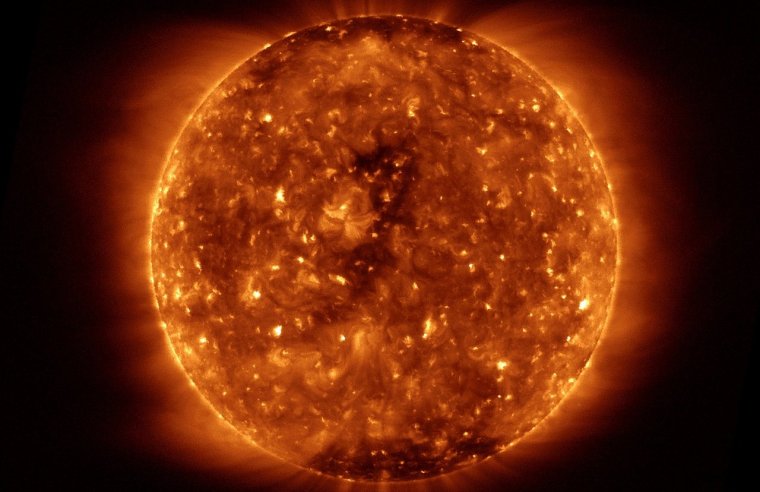| News / Science News |
Analysis determines we are in Solar Cycle 25
The solar minimum between Solar Cycle 24 and 25 - the period when the sun is least active - happened in December 2019, when the 13-month smoothed sunspot number fell to 1.8, according to the Solar Cycle 25 Prediction Panel, co-chaired by NOAA and NASA. We are now in Solar Cycle 25 with peak sunspot activity expected in 2025, the panel said.

Solar minimum - the period when the sun is least active - as seen by the Solar Ultraviolet Imager aboard GOES-East on Dec. 15, 2019. Credit: NOAA.
Solar Cycle 24 was average in length, at 11 years, and had the 4th-smallest intensity since regular record keeping began with Solar Cycle 1 in 1755. It was also the weakest cycle in 100 years. Solar maximum occurred in April 2014 with sunspots peaking at 114 for the solar cycle, well below average, which is 179.
Solar Cycle 24’s progression was unusual. The Sun’s Northern Hemisphere led the sunspot cycle, peaking over two years ahead of the Southern Hemisphere sunspot peak. This resulted in solar maximum having fewer sunspots than if the two hemispheres were in phase.
For the past eight months, activity on the sun has steadily increased, indicating we transitioned to Solar Cycle 25. Solar Cycle 25 is forecast to be a fairly weak cycle, the same strength as cycle 24. Solar maximum is expected in July 2025, with a peak of 115 sunspots.
“How quickly solar activity rises is an indicator on how strong the solar cycle will be,” said Doug Biesecker, Ph.D., panel co-chair and a solar physicist at NOAA’s Space Weather Prediction Center. “Although we’ve seen a steady increase in sunspot activity this year, it is slow.”
The panel has high confidence that Solar Cycle 25 will break the trend of weakening solar activity seen over the past four cycles. “We predict the decline in solar cycle amplitude, seen from cycles 21 through 24, has come to an end,” said Lisa Upton, Ph.D., panel co-chair and solar physicist with Space Systems Research Corp. “There is no indication we are approaching a Maunder-type minimum in solar activity.”
“While we are not predicting a particularly active Solar Cycle 25, violent eruptions from the Sun can occur at any time,” Biesecker added.
Solar cycle prediction gives a rough idea of the frequency of space weather storms of all types, from radio blackouts to geomagnetic storms and solar radiation storms. It is used by many industries to gauge the potential impact of space weather in the coming years. (NOAA)
YOU MAY ALSO LIKE





